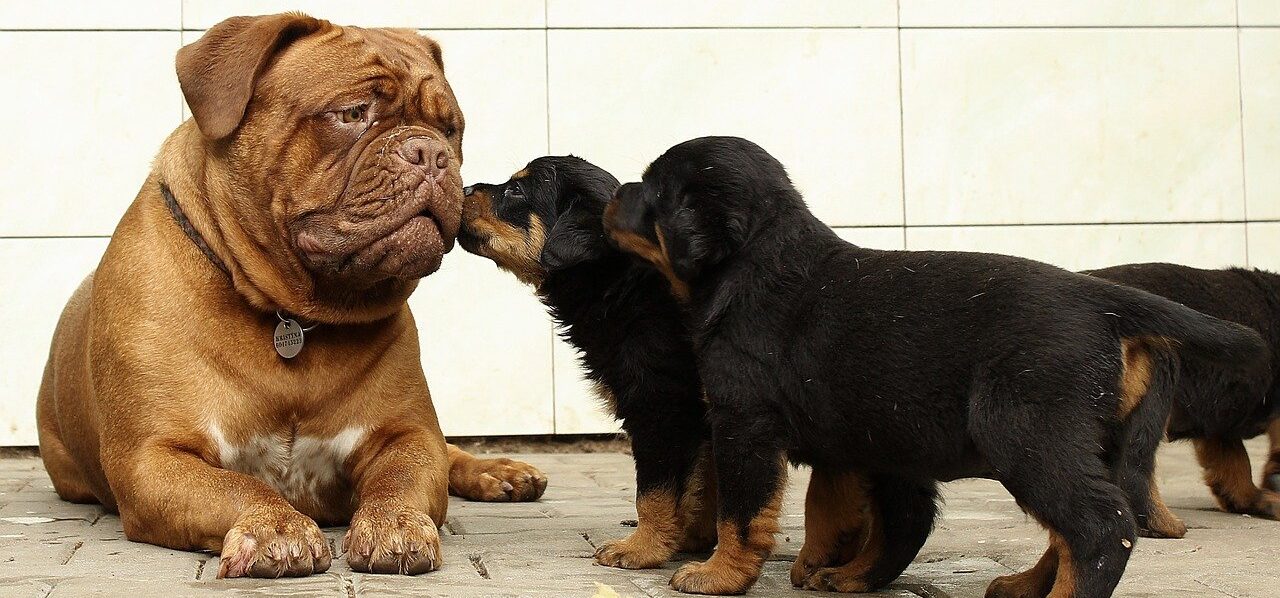How to Introduce Your Dog to a New Puppy

Bringing a new puppy into your family is an amazing feeling and having a proper introduction is crucial to ensure a smooth transition for both of your dogs. Prior to the introduction, there are a few things to keep in mind.
Introduce them at a neutral place
Dogs are naturally territorial. Hence, it’s a good idea to introduce the older dog to the new puppy outside of your home. Take the older dog out for a walk and have both dogs meet each other on the street. You can also introduce them behind a fence where they are separate but can still properly greet each other. Allow them to sniff each other without interruption and provide treats and encouragement to both dogs when they engage each other.
Leash them and don’t let your anxiety show
Don’t be surprised! Your dog can actually read your body language and sense your anxiety through the unconscious behavior you display. As an example, your anxiety may cause you to tighten the leash grip. The tightened grip can increase the tension which warrants negative behaviors during the initial meet and greet. So, relax your hands, keep the leash loose, and let them get to know each other. It’s important to note to keep the initial introduction brief, so both dogs won’t be too overwhelmed.
Exercise both dogs prior to the introduction
Providing exercise for the older dog and the youngster prior to the meeting is a great idea! A tired dog is going to be calmer. Hence, the meeting will more likely be a pleasant experience. If you have an overly excited big dog sniffing up and trampling the pup, the youngster might feel overwhelmed and tells the big dog off with a hiss or a growl. The aggressive cues given off by both dogs might lead to fearfulness during the transitional period. So, tiring them both might work to their advantage for a seamless transition.
Monitor the dogs for a couple of weeks
In a brand new environment, puppies are often anxious, needy, playful, and curious. At this stage of life, the youngster has yet to develop proper adult social etiquette. Young puppies are notoriously playful, and this playful behavior might unintentionally trigger a negative reaction from the older dog. You could also have a playful older dog that could cause unintentional injury to the small little pup. Therefore, make sure you provide supervision when both dogs are together in a room to prevent unwanted accidents during playtime. If you need to leave the room, separate them with a baby gate. Oh yes, make sure you reward them both with lots of praises and treats when they engage in friendly interactions!
Separate their bowls
When a young pup enters a new home, it has many house rules to learn. Most of the time, you can allow the older dog to teach the youngster a thing or two. Dogs learn based on action and reaction. Let’s say if your older dog is sleeping and the youngster starts biting the tail of the sleeping dog, the older dog might send off a warning growl to voice its opinion. The young pup will then learn that this behavior is unacceptable and hopefully back off. The word hopefully is said for a purpose because some young pups might view the growl as a challenge and repeat the behavior much like the annoying younger sibling. Hence, this is the time for you to intervene and set the ground rule. Now, when it comes to food, it’s better to not leave the teaching responsibility to the older dog. Food is a big cause of territorial aggression, and this aggression can often leave the youngster injured and bruised. As a safety precaution, separate the dogs when they eat and slowly move their bowl closer in proximity until they can tolerate each other’s sight during feeding time. This transition may take a few days to a few weeks. Be patient.
Try walking together
Dogs are pack animals and walking together makes them feel like a unit. Go on regular walks together to promote pack unity.
Congratulations on the new addition to your family!